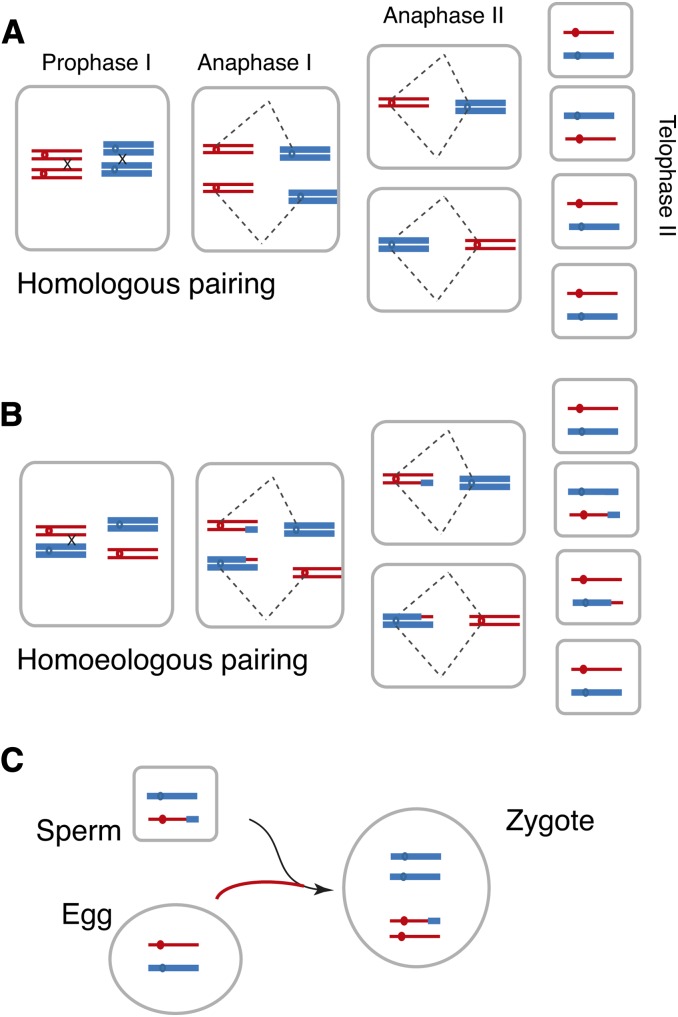Figure 3.
Formation of a Homoeologous Exchange.
A hypothetical allopolyploid with four chromosomes is illustrated. Thin or thick lines depict chromosomes from one ancestral or the other ancestral genome. Hatched lines represent the spindle apparatus.
(A) Regular meiosis showing properly paired replicated chromosomes undergoing recombination and disjunction and the resulting meiotic products.
(B) Intergenomic pairing and recombination between homoeologous chromosomes leading to the formation of two unbalanced gametes.
(C) One unbalanced gamete fertilizes an egg leading to a zygote containing extra DNA from the thick-marked genome and missing the corresponding segment of the thin-marked genome. The outcome illustrated results from syntenic chromosomes. If the paired regions leading to exchanges are located on chromosomes that are structurally diverged (e.g., have inverted segments), the result can be catastrophic, leading to such aberrations as dicentric or acentric chromosomes, chromosomal breakage, and large deficiencies or duplication in the affected meiotic products. These, in turn, can lead to lethality in the gamete or in the zygote.
[See online article for color version of this figure.]

